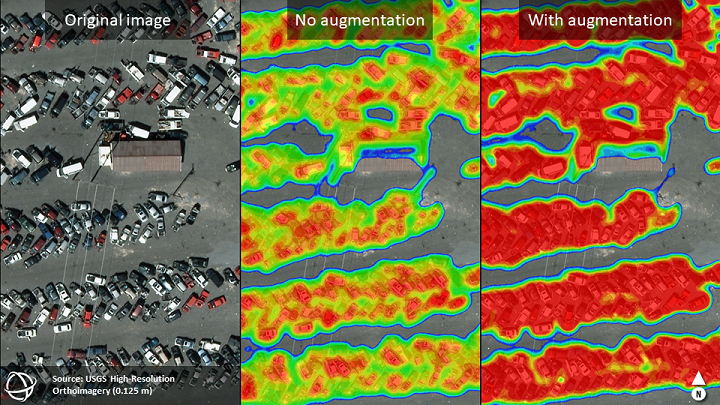3287
ENVI Deep Learning 1.1.2 Release Notes
For system requirements, please see the ENVI Deep Learning System Requirements topic in the L3Harris Geospatial Documentation Center.
What's New in This Release
ENVI Deep Learning 1.1.2 includes options to apply augmentation during training. Augmentation is a technique commonly used with deep learning to supplement the original training data. It involves creating modified versions of the training images, usually through a geometric transformation such as scaling, flipping, rotating, and/or translating the data. ENVI allows you to choose to apply scaling and rotation, while it performs translations automatically.
By having more information to extract from the training data, the trainer and classifier can more effectively learn what features of interest look like. Augmentation can also improve the ability of the models to generalize what they have learned, to new images. It can also reduce the amount of labeling you have to do, particularly with capturing various rotations and sizes of features.
ENVI Deep Learning 1.1.2 provides two new training parameters:
- Augment Scale: Augment training data with resized (scaled) versions of the data.
- Augment Rotation: Augment training data with rotated versions of the data.
Similarly, AUGMENT_SCALE and AUGMENT_ROTATION parameters were added to ENVITrainTensorFlowMaskModelTask for ENVI programmers.
The following image shows an example of how augmentation improved the classification of vehicles in an aerial image. The second and third views show the resulting class activation raster, one with no augmentation and the other with the Augment Rotation option enabled during training. The vehicles are arranged in different directions. In this case, augmentation improved the probability that the identified objects belonged to the "Vehicle" class.

Fixed Issues
None